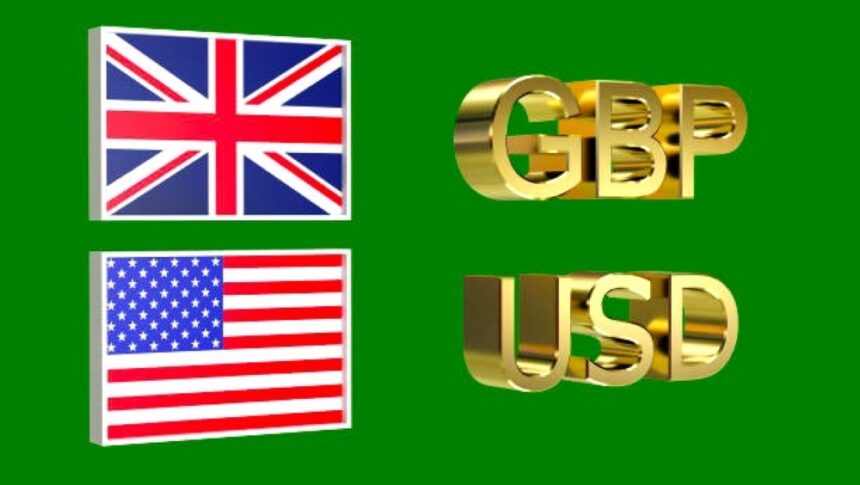The British Pound (GBP) is regaining strength against the US Dollar (USD) in early Monday trading, with the GBP/USD pair rebounding above 1.3200 as markets digest a weaker-than-expected US Nonfarm Payrolls (NFP) report. The data has significantly increased the probability of a Federal Reserve interest rate cut at the September FOMC meeting, giving the green light to Pound bulls to retake lost ground.
Friday’s US jobs report painted a gloomy picture of the labor market, with only 73,000 jobs added in July against the forecast of 110,000. Furthermore, previous months’ revisions slashed over 250,000 jobs from prior estimates, further weakening confidence in the US economic outlook. While wage growth remained slightly stronger at 3.9% YoY, the uptick in the unemployment rate to 4.2% kept USD bulls defensive.
As a result, the CME FedWatch Tool now prices in over an 80% chance of a Fed rate cut in September, down from less than 60% a week earlier. Treasury yields also collapsed across the curve, dragging the US Dollar lower and paving the way for a GBPUSD rebound from its post-NFP lows.
BoE Policy Outlook: Will Bailey Deliver a Dovish Surprise?
Meanwhile, traders are also closely watching the Bank of England’s next policy move, with expectations for a rate cut later this year growing — albeit at a slower pace than the Fed. The BoE, which has maintained rates at 5.25% since August 2023, is walking a fine line between persistent inflation and weakening growth momentum.
UK inflation data has shown gradual moderation, but not enough to justify aggressive easing. The most recent Consumer Price Index (CPI) report revealed a headline inflation rate of 2.5%, still above the BoE’s 2% target. Meanwhile, core inflation remained sticky at 3.5%, underscoring the central bank’s cautious tone in recent meetings.
That said, Governor Andrew Bailey and other MPC members have hinted that rate cuts may begin in Q4 2025, assuming inflation and labor market data allow. Markets currently price in one to two 25 basis point cuts by year-end, but expectations remain fluid, particularly in light of growing recessionary signals in the UK economy.
UK Macro: Growth Slows but Resilience Remains
Beyond monetary policy, recent UK economic data has been mixed, supporting the BoE’s wait-and-see approach. The latest GDP figures showed flat growth in Q2, barely escaping a technical recession. However, services PMI data surprised to the upside, rising to 52.3 in July, suggesting some underlying resilience in the dominant sector of the economy.
At the same time, retail sales remain soft, and business investment is beginning to stall, largely due to political uncertainty and concerns over the UK’s fiscal trajectory. The newly elected government has signaled a focus on infrastructure and social spending, but budgetary constraints and rising debt servicing costs may limit room for maneuver.
These crosscurrents in UK macro data have prompted a cautious but slightly more optimistic stance among Pound traders, particularly given the growing divergence between Fed and BoE policy outlooks.
US Jobs Report Fallout: Weakness Resets Fed Expectations
The biggest driver of the Pound rally on Friday and Monday remains the US jobs report. The July NFP figure of just 73,000, combined with heavy downward revisions for May and June, suggest that the labor market is losing steam faster than previously thought.
Unemployment Rate: Rose to 4.2% (from 4.1%)
Average Hourly Earnings: Increased by 3.9% YoY (from 3.8%)
Labor Force Participation: Remained unchanged at 62.6%
Adding to bearish sentiment for the US Dollar was news of Fed Governor Adriana Kugler’s early resignation, which briefly unsettled markets amid speculation about policy alignment at the Fed. Although her departure is unlikely to shift the overall stance of the FOMC, it contributed to broader USD weakness in the immediate aftermath of the NFP release.
GBPUSD Technical Outlook: Reclaims 1.3200, Eyes 1.3280
From a technical standpoint, GBP/USD has broken back above the key psychological level of 1.3200, signaling a recovery in short-term bullish momentum. The pair is now trading near 1.3245, with immediate resistance seen at 1.3280 the mid-July high.
Key levels to watch:
Resistance: 1.3280 (swing high), 1.3350 (2025 high), 1.3400 (psychological)
Support: 1.3180 (20-day EMA), 1.3110 (trendline support), 1.3050 (July low)
Momentum indicators such as the Relative Strength Index (RSI) are trending higher, but not yet overbought, suggesting room for further upside. A sustained close above 1.3280 could open the path toward the 1.3350–1.3400 zone, especially if upcoming US data confirms the slowdown narrative.
Market Sentiment: USD on Defensive, Pound Benefits
The overall market sentiment has tilted in favor of the British Pound, driven largely by:
1. Weak US jobs data reinforcing Fed rate cut bets
2. BoE seen as lagging behind in the global easing cycle
3. Risk-on sentiment in equities supporting higher-beta currencies like GBP
4. USD losing its yield advantage amid falling Treasury yields
However, sentiment remains fragile, and any surprises in upcoming US or UK data particularly US Factory Orders, UK GDP, or BoE minutes could quickly shift market dynamics.
Geopolitical and Fiscal Considerations
The political backdrop in both economies also plays a secondary role in currency valuation. In the UK, the Labour government has promised fiscal responsibility, but market participants are wary of new spending initiatives and how they might affect gilts and the Pound.
In the US, the combination of election-year uncertainty, potential government shutdowns, and the growing fiscal deficit are likely to remain in focus. These factors, especially if accompanied by falling yields, could further weaken the USD.
Conclusion: GBPUSD Faces a Bullish Tilt but Requires Confirmation
The British Pound is gaining ground as the market resets expectations for the Fed’s policy path following a dismal US employment report. The GBPUSD pair could continue its recovery in the near term, especially if US data underperforms and the BoE maintains a relatively hawkish stance.
However, the sustainability of this rally depends on follow-through buying and confirmation from upcoming economic indicators and central bank communications. Traders should also keep a close eye on risk sentiment, especially in the equity and bond markets, which remain closely tied to rate expectations and safe-haven demand.









